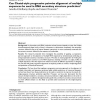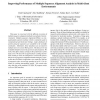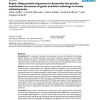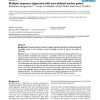820 search results - page 4 / 164 » Using Multiple Alignments to Improve Gene Prediction |
BMCBI
2008
13 years 7 months ago
2008
Background: Comparative prediction of RNA structures can be used to identify functional noncoding RNAs in genomic screens. It was shown recently by Babak et al. [BMC Bioinformatic...
BMCBI
2007
13 years 7 months ago
2007
Background: In ribonucleic acid (RNA) molecules whose function depends on their final, folded three-dimensional shape (such as those in ribosomes or spliceosome complexes), the se...
IPPS
2002
IEEE
14 years 7 days ago
2002
IEEE
This paper is concerned with the efficient execution of multiplesequence alignmentmethodsin a multipleclientenvironment. Multiple sequence alignment (MSA) is a computationally ex...
BMCBI
2008
13 years 7 months ago
2008
Background: For many types of analyses, data about gene structure and locations of non-coding regions of genes are required. Although a vast amount of genomic sequence data is ava...
ALMOB
2006
13 years 7 months ago
2006
Background: Automated software tools for multiple alignment often fail to produce biologically meaningful results. In such situations, expert knowledge can help to improve the qua...




